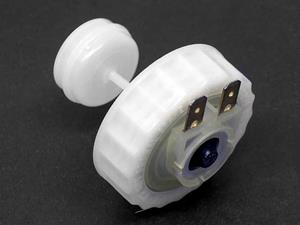The fluid level float came apart in my brake reservoir. What are you guys using now that they seem to be discontinued? I have a 2002 parts car I can steal one from if I have to.
#6 in diagram

#6 in diagram




Don,Look closely- original has a screen (sieb) and an independent float (schwimmer) with a rubber connector and a black lid with a blue electrical cap.
the rm European one is white and a complete unit
the one from Joachim is for the part that goes bad- no cap
Great question- there are half a dozen different ATE caps out there in white with different part numbers and prices. i finally just just went with the cheapest that worked! Blue I put in restorations and white in resto-mods.Don,
I know the original is completely different. However, there are 2 aftermarket ATE caps w/ floats. I have the 34321153157 in my E9 and it works. I was just curious how the 34321153156 is different other than the pn and price. Thx, Dan



I do not doubt that plastic floats fail. I just do not specifically recall experiencing this situation. As I mention above, I have experienced the brake warning light and discovered that the float was detached. A few donor float assemblies were likewise unusable because the rubber float attachment point was sloppy or severely decomposed making reattachment temporary and futile.More prevalent is the float filling with brake fluid.
Would using thin small-sized metal parts from a rivet of the same size of the perished rubber work or create a short in the connection? I will assume that the metal will last indefinitely and as long as it doesn't break the circuit...Thoughts?Brake reservoir float musings:
Decomposition of a simple press-fit rubber grommet or seal is the problem source. The rubber bit that sits or is cradled in the top of the reservoir float also serves to attach the float to a brass rod that is responsible for creating a simple electrical circuit. When the rubber seal perishes this allows detachment of the brass rod from the float. So, resolution seems to be replacement of the rubber grommet/seal or an alternate means of attaching the brass rod to the float - without damaging the integrity of the float.
A dab of epoxy would seem to be the perfect rubber replacement; however, I would be concerned about the epoxy’s compatibility with constant brake fluid immersion. Same concern with other adhesives, urethanes, silicone RTV etc. I once found a donor float assembly that had the float and brass rod connected with what appeared to be hardened Permatex. The result was not pretty but it evidently worked. I did not use this example, but gave it to someone else. Another approach might be to find a viton o-ring or similar. I found such a plug in an extra parts drawer, but was concerned that the fix would be short-lived, not knowing how the rubber might react with brake fluid. Another somewhat inelegant fix might involve using some (brake-fluid-compatible) plastic from another brake fluid reservoir assembly. Using a heat gun, the plastic could be melted and formed to take the place of the perished rubber.
FWIW, I ended up using a new old stock float assembly with the understanding that it will not last indefinitely.
View attachment 142219




